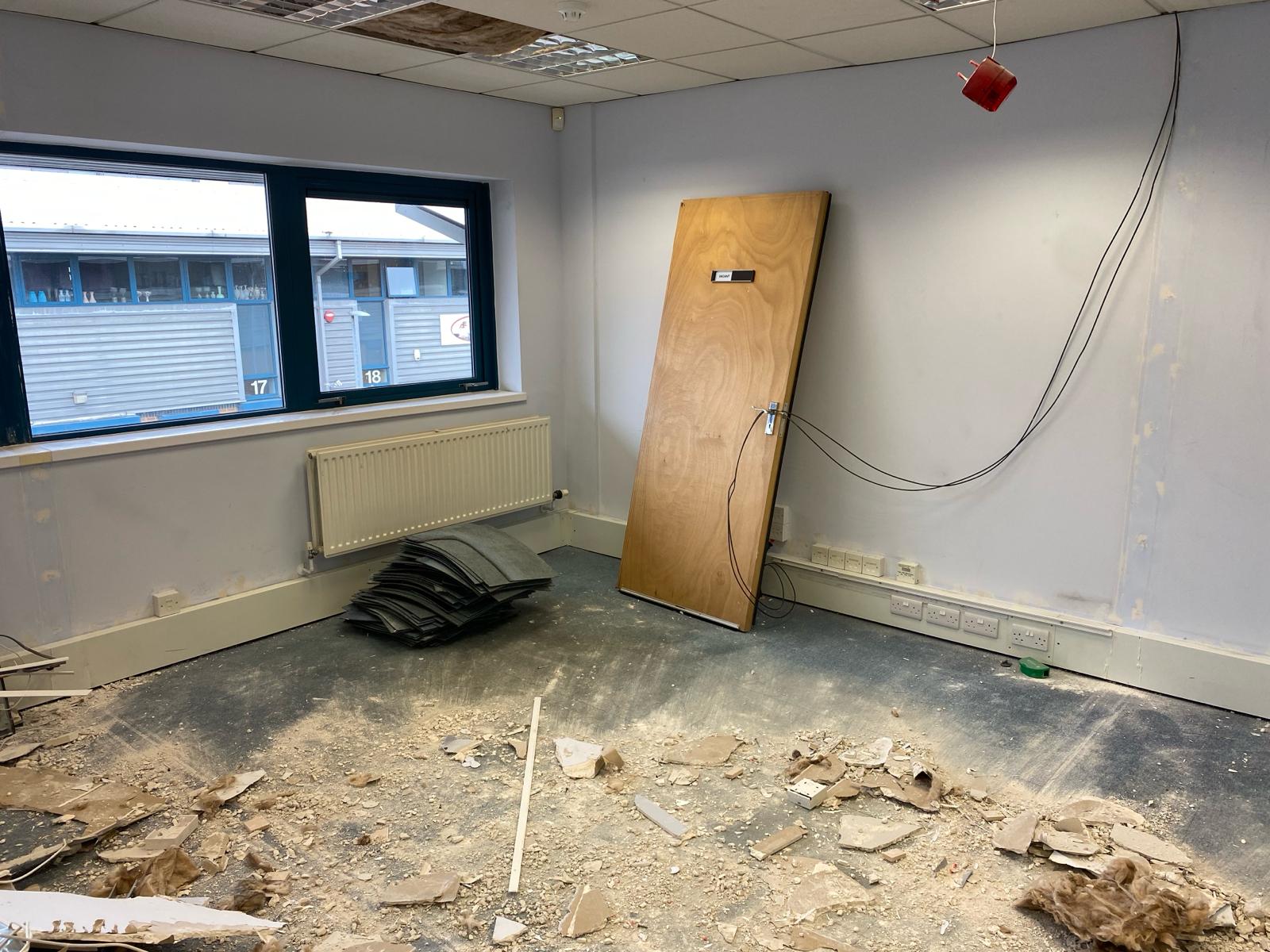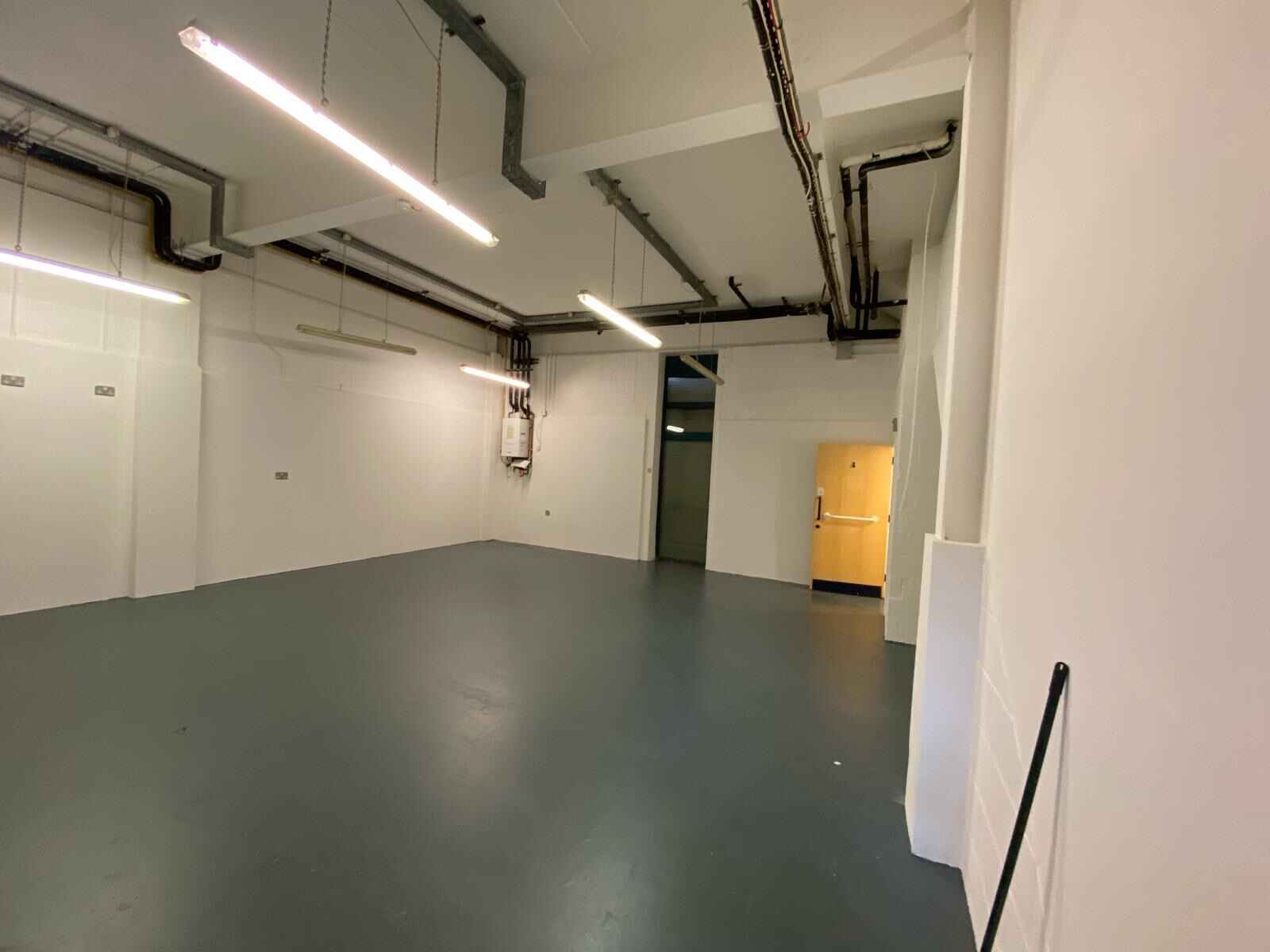Strip Contractors London Blog
How to Minimise Disruption During an Office Strip Out
February 5, 2025

Office strip-out is the process of removing fittings and fixtures from the office premises. You remove things not integral to the building structure, such as office furniture, PCs, printers, ceilings, windows, and doors. The strip-out process mustn't disrupt the office work. Otherwise, the company's financial loss will be unbearable. So, plan for it in a way that causes minimal disruption. You can divide the entire office into sections and remove fittings and fixtures one at a time. The process will make it much easier for the business to run smoothly. In the following discussion, you will learn different strategies for improving the strip-out process without disrupting office work. You will learn the importance of conducting a site survey before the process begins. You will also know that communication is the key to a successful office strip-out process. Scroll on to learn a lot more about the process.
Planning for a Smooth Office Strip Out
It is full of challenges to complete an office strip-out work during the work hour. It may put the strip-out workers and workers at the office in danger. However, let’s see how you can complete the work with ease.
Assessing the Scope of Work
A complete site survey should be done at the beginning of the project. It will help identify and understand the project's specific requirements. For example, if your office building was built around the '90s, it may contain asbestos. So, an asbestos removal survey is necessary before stripping out the building. Alternatively, if there are structural issues, an initial survey will help identify and mark the area. It may safeguard workers during the strip-out process.
Creating a Strip Out Schedule
Why should I create a schedule when I know what to do? Well, creating a schedule brings clarity to the project. Workers understand the job requirement and their work responsibilities. Besides, when you set realistic goals for the workers to achieve, they get the motivation to do more. So, your office strip-out project gets completed within the set timeline, and workers don’t feel pressured. You must ensure that the project is not overstretched beyond the scheduled time. Overstretching will disrupt office activities and cause workers to lose motivation.
Notifying Employees and Stakeholders
To avoid disruption in the office work, communicate with office staff, clients and other stakeholders. So, even if you have difficulty delivering a project, your clients will understand. Communicate with them a clear timeline for the project within which you’ll finish your office strip-out work. During the project, you can allow employees to work from home. This will continue your business operations while the office renovation is done. However, maintain a two-way communication approach with employees while they work remotely. Otherwise, they might feel a lack of guidance and direction.
Implementing Strategies to Reduce Noise and Dust
Dust and noise are common problems in construction or demolition work. Solid strategies are needed to overcome these challenges.
Using Advanced Strip Out Techniques
When old machinery is used for office stripping, it produces much noise and dust. This disturbs other offices nearby, and if a part of the workforce works in the office, their work is most disrupted. So, how can noise and dust be minimised on-site? Using modern machinery with low noise is an effective solution. Modern machines also collect dust particles at the source, limiting the spread of dust pollution. Alternatively, you can install temporary barriers.
Installing Temporary Barriers and Protective Measures
If you complete the office strip-out work in small parts, screen off the section with plastic or plywood covers. It will limit the spread of dust or noise, and office work will continue without disruption. Neighbouring offices will also not complain about noise pollution. You can ask your staff to wear protective masks and earplugs during the office strip-out work. It will help to protect themselves from noise and dust. To further reduce the spread of dust particles, use water and spray inside the office.
Managing Waste Removal Efficiently
To reduce office disruption, you must remove all the waste materials from the site. Otherwise, it may disturb office work and harm staff health.
Arranging Scheduled Waste Collection
Hire a licenced waste removal service to remove all waste materials from the site. A licensed waste remover can differentiate waste materials and carry them to dedicated disposal sites. Besides, if you have hazardous waste, you need experts to take it to a specific zone for hazardous waste disposal. Swift waste removal from the site helps avoid office congestion. Besides, scheduling waste removal ensures the proper functioning of the office, so workers can resume working in a safe place.
Recycling and Sustainability Considerations
As a part of the environment, you have a role in protecting environmental sustainability. Consider recycling the waste materials generated during the office strip-out work. Besides, you can reuse some materials in the office while renovating it. To further streamline your business, comply with the UK environmental regulations. Salvedge waste materials as much as possible and use them in your office. Besides, you should be careful not to damage the environment by discarding waste here and there.
Choosing the Right Strip-Out Contractor
If you aim to minimise disruption in office work, choose a reliable strip-out contractor. The question is, how should you do that?
Evaluating Contractor Experience and Credentials
Consider evaluating the contractor's experience in the industry. Ask him about his previous work and any challenges you might face during the office strip-out project. His answers will tell you a lot about his capability and experience in the industry. You can look for contractors with industry accreditations. If they are present online, look for Google reviews. Service reviews from actual customers are a great way to determine whether you should hire a contractor.
Ensuring Compliance with UK Regulations
The last thing you want is to violate regulatory compliance during the office strip-out work. There is no strict regulation for strip-out unless you plan to demolish the building. In that case, the Building Act 1984 mandates that you give six weeks of notice to the local authority before demolition. However, you must comply with the Control of Asbestos Regulations 2012, which mandates protecting workers from asbestos.
Conclusion
In conclusion, adopt a work-from-home strategy or complete the work by dividing the office premises into small sections. It will help you minimise disruption in office work. Besides, choosing an expert and a reliable strip-out contractor will also help complete your job efficiently. At Strip Out Contractors London, we offer an expert strip-out solution for your office, residence or other buildings. Contact us today for an obligation-free quote.
What is the difference between Strip Out and Demolition?
January 23, 2025

The strip-out process is a meticulous and methodical operation that systematically removes all interior components within a building. This includes meticulously removing walls, ceilings, floors, fixtures, and furnishings, leaving the core structural elements like beams and exterior walls untouched. The purpose of this intricate procedure is to preserve the building's structural integrity, allowing the existing framework to remain intact. Strip-outs are commonly conducted as a precursor to renovation or refurbishment projects, providing a clean slate for the space to be reconfigured and updated efficiently.
Thoroughly clearing out the internal parts allows the area to be easily reconfigured and modernised. This allows for the installation of brand-new infrastructure, upgraded utilities, and contemporary finishes without the need for complete demolition, which would demolish the entire structure down to its foundation.
In contrast, demolition refers to a building or structure's complete and total destruction, leaving no part of the original intact. This process encompasses dismantling the outer walls and the internal elements, completely removing the entire edifice from its very foundation. Demolition is typically undertaken when a structure is deemed beyond repair or obsolete, paving the way for new construction or site redevelopment. The demolition process can involve various techniques, from the deployment of heavy machinery like excavators and bulldozers to the strategic use of explosives to the meticulous manual disassembly of the structure piece by piece.
The strip-out process involves the meticulous and controlled removal of a building's internal components while carefully preserving the structural integrity of the main framework. This approach starkly contrasts the complete demolition of a structure, which aims to eradicate the entire building, leaving no trace of its former existence. During a strip-out, skilled workers meticulously dismantle walls, ceilings, and floors, extracting these internal elements with great care to ensure the underlying structural foundation remains intact. This preparatory step is crucial for property owners and developers who plan to renovate or refurbish a building, as it allows for installing new fittings and fixtures without needing to demolish the entire structure.
On the other hand, demolition represents the total and comprehensive destruction of a building, including its shell, internal components, and external elements. This process is typically undertaken to make way for a new construction project or clear a redevelopment site. Demolition may involve using heavy machinery, explosives, or manual labour, carefully executed to safely bring down the structure and clear the area for the next construction phase. The decision between strip-out and demolition is critical for property owners and developers, as it directly impacts their construction or renovation plans' scope, cost, and timeline. Understanding these two approaches' distinct objectives and methods is essential in determining the most suitable option for their specific needs. The renovation process involves carefully preserving the vital elements of a structure, leaving the fundamental framework intact.
In contrast, demolition calls for the complete and utter destruction of the entire building, leaving behind only rubble and debris. During a renovation, the skilled artisans meticulously dismantle and replace specific components, such as outdated fixtures or worn-out materials, while maintaining the overall integrity of the edifice. The goal is to breathe new life into the structure, updating its appearance and functionality without compromising stability. Conversely, demolition is a more drastic measure that razes the entire building to the ground, clearing the way for a fresh start and constructing a brand-new structure.